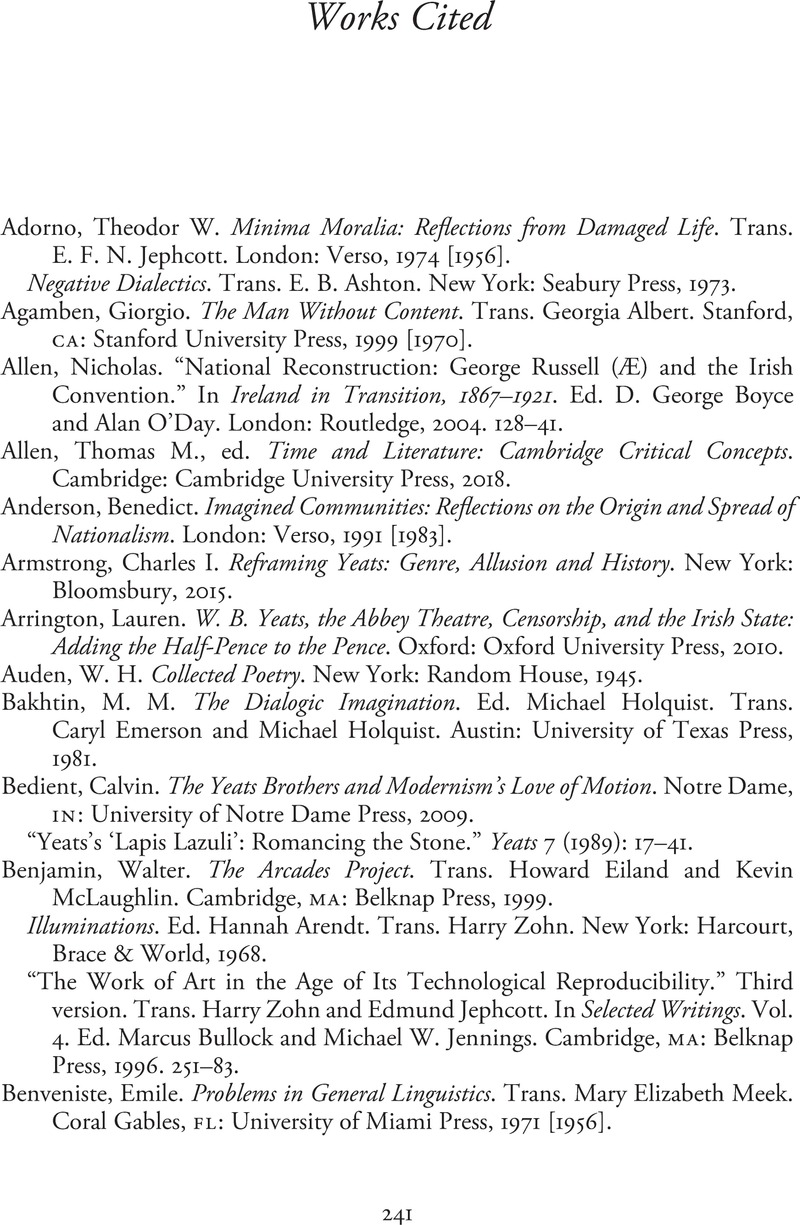Book contents
- Yeats, Revival, and the Temporalities of Irish Modernism
- Yeats, Revival, and the Temporalities of Irish Modernism
- Copyright page
- Dedication
- Contents
- Figures
- Acknowledgments
- Note on Citations
- Abbreviations
- Introduction Time, Recognition, and the Worlds of Yeats’s Work
- Chapter 1 The Irish Revival and Yeats’s Literary Nationalism
- Chapter 2 “A Dream-Heavy Land”
- Chapter 3 “O When Will It Suffice?”
- Chapter 4 “The Age-Long Memoried Self”
- Chapter 5 “I Make the Truth”
- Chapter 6 “They Had Changed Their Throats”
- Conclusion
- Works Cited
- Index
- References
Works Cited
Published online by Cambridge University Press: 11 April 2024
- Yeats, Revival, and the Temporalities of Irish Modernism
- Yeats, Revival, and the Temporalities of Irish Modernism
- Copyright page
- Dedication
- Contents
- Figures
- Acknowledgments
- Note on Citations
- Abbreviations
- Introduction Time, Recognition, and the Worlds of Yeats’s Work
- Chapter 1 The Irish Revival and Yeats’s Literary Nationalism
- Chapter 2 “A Dream-Heavy Land”
- Chapter 3 “O When Will It Suffice?”
- Chapter 4 “The Age-Long Memoried Self”
- Chapter 5 “I Make the Truth”
- Chapter 6 “They Had Changed Their Throats”
- Conclusion
- Works Cited
- Index
- References
Summary

- Type
- Chapter
- Information
- Yeats, Revival, and the Temporalities of Irish Modernism , pp. 241 - 252Publisher: Cambridge University PressPrint publication year: 2024



